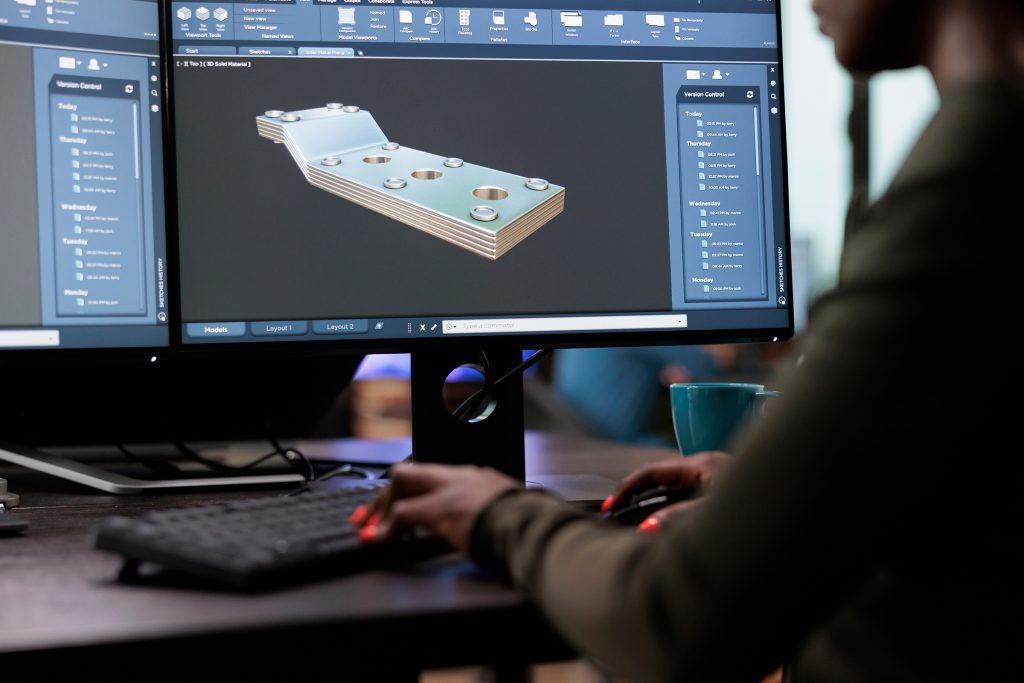How Does 3D Rendering Work?
3D rendering–or 3D modeling–is a process by which a designer creates a realistic image using computer software.
By offering photo-realistic graphics that showcase the intricacy of a product, design, or building concept, 3D rendering services are in huge demand.
Today we’ll answer these frequently asked questions: How much do 3D product renders cost? How does effective 3D rendering work? What are the applications of 3D rendering?
Let’s start with a summary of the design work that goes into creating a computerized 3D visualization.
What Are the Average Costs of 3D Rendering?
It’s tricky to give an accurate cost of 3D rendering because 3D projects vary considerably in complexity.
For example, a VR tour of an architectural design might cost $1 per square foot and take a 3D engineer one to two weeks to produce. Product renders cost $300 to $900 on average, with a timeframe of two to four days. Producing an accurate digital replica of a machine or vehicle requires a budget of roughly $50 an hour—up to $2,500 or more for larger projects.
How Does a 3D Renderer Produce Each Graphic?
The process works like this:
- All the data that makes up the scene is entered into a computer using modeling software.
- The designer incorporates material specifications to differentiate metal, plastic, concrete, glass, etc.
- Next, they add lighting fit to the background and the type of 3D render.
- Finally, the designer computes the finished image.
Lighting, shadow, texture, and staging are key to developing an exceptional 3D render and making the finished product look like an authentic photograph.
The difference from a photograph, however, is that a 3D render can spin and flip, open and close, and move with the viewer, similar to a real-time video—even though the subject matter isn’t physically real.
Designers often use ray tracing, which tracks light rays through virtual pixel planes to simulate realistic effects. You can experience walking through a space, holding a product in your hands, or seeing a character come to life–all through a computer screen.
3D renders can become expensive, though, because the artist needs to spend a considerable amount of time creating every tiny element of the render on the computer. Although each project can be time-intensive, the finished visual is immersive, highly detailed, and entirely bespoke.
How Can I Hire Someone to Produce a 3D Render?
Most professionals in the 3D rendering world refer to themselves as either a 3D render architect, a 3D designer, or a 3D developer. The skill level you require will vary with each project—a beginner might specialize in 3D banners for promotional purposes, whereas an experienced designer can create entire computer games from scratch.
A lot of the work required in product rendering is included in the mathematical formulas that control things like animation—formulas in the programming software. However, the creator must know how to manipulate the software to create the images they require.
What Are the Main Uses of 3D Rendering?
Most businesses that hire a 3D render designer want to explore options, visualize finishes, or play with concepts before investing in a final product. 3D rendering is also a powerful way to communicate an idea or share what a new product in development might look like, which is often key to securing investment, drumming up excitement, or building towards a launch.
Creative industries use 3D rendering to test ideas, evaluate which materials to use, or contextualize how a mechanical product would work before moving to mass manufacturing. One of the best aspects of a 3D render is that it is wholly customizable. For example, if you’re interested in a few “what-if” scenarios, you could edit your rendered graphic with different colors and shapes or slot it into environmental backgrounds to see how your idea performs.
How Does 3D Rendering Benefit a Business?
Traditional 2D renders have limitations, particularly for complex designs, which 3D rendering overcomes.
Advantages from a business perspective include:
- Timesaving—if you hire an experienced 3D rendering designer or agency, you can develop a design, present it to a client, and sign off on the specification without needing to create anything physically.
- Cost-effectiveness—rendering costs have fallen as technology advances. Building several 3D renders to try different color schemes for a building, for example, is much cheaper and faster than revisiting a contracted project.
- Communication—visions and ideas are notoriously hard to share without a visual medium, and mood boards and CAD drawings aren’t as realistic as a 3D render.
As a promotional, marketing, and design tool, 3D rendering has countless applications and can make a remarkable difference in streamlining product development and presenting a polished picture of what you’re trying to achieve.



